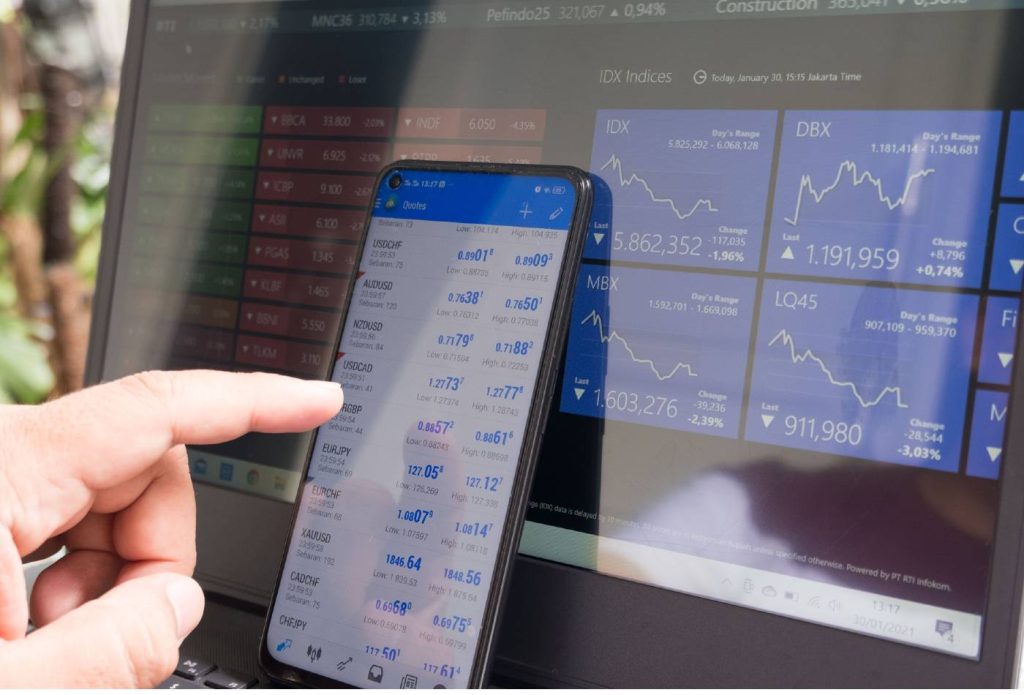Forex trading plans are essential for beginner traders because they provide a strategy for entering the market. A trading plan allows inexperienced traders to set precise goals, develop a strategy, and establish trading ground rules. It allows you to track your development and evaluate your performance while also supporting beginners in keeping concentration and avoiding impulsive decisions. A trading plan can also help rookie traders manage risk by defining stop-losses and determining appropriate position sizes. Overall, a forex trading strategy can assist beginners to the market in better understanding the industry and increasing their chances of success.
Table of contents
What Is a Forex Trading Plan for Beginners?
Forex trading, also known as foreign currency trading, may be a very lucrative way to make money if you have the knowledge and skills to navigate the market. The foreign currency market is the biggest financial market in the world, with daily trades worth more than $5 trillion. There are countless opportunities for traders to make money by buying and selling currencies on this large market. A strong trading strategy is crucial because of the forex market’s potential for severe volatility and unpredictability.
A forex trading plan is a set of guidelines and strategies you employ to decide on your trading course of action. It should contain details on the currency pairs you plan to trade as well as your risk-taking methods and overarching trading plan. Your chances of success can be increased while your risk can be decreased with the aid of a well-planned trading strategy.
What Are the Basic Elements of a Forex Trading Plan?
A typical forex trading plan includes the following main components:
– Goals: This section of the plan outlines the goals of your trading and your desired financial outcome.
– Trading Strategy: Developing an effective strategy is the key to forex trading success. This section should define your trading approach, including technical analysis, risk management, and trading tools.
– Timeframe: Your trading timeframe will generally depend on your goals and risk tolerance. For example, if you have a short-term goal, you might select a short-term strategy and trade over a one-week period. Conversely, if you have a long-term goal, you might select a long-term strategy and trade over a longer period.
– Risk Management: Risk management is an essential part of forex trading, and this section should define your risk tolerance and the steps you’ll take to mitigate losses.
– Psychology: Trading psychology is an often-overlooked factor but can have a major impact on your decision-making and results. This element of your trading plan should include techniques to help you manage your emotions while trading.
– Entry and Exit Points: This section should outline the criteria you will use to enter and exit trades, such as technical indicators or chart patterns. It should also include your profit and stop-loss targets for each trade.
– Evaluation and Improvement: This section should include a plan for regularly evaluating your trading performance and making adjustments to improve your results. This could include analyzing your trading journal, testing different strategies, or seeking feedback from other traders.
– Resources: This section should list the tools and resources you will use for your trading, such as charting software, economic calendars, and market news sources.
By having a comprehensive and well-crafted forex trading plan, you can increase your chances of success in the market and help to minimize risk. It should be regularly reviewed, updated, and improved as you gain more experience and knowledge in the market.
Related: Comprehensive Forex Glossary For Traders
How to Create a Forex Trading Plan
1. Goal Setting
Prior to starting your forex trading, it is vital that you set specific, attainable goals for yourself. Your objectives, which determine your timeframe and risk tolerance, should be consistent with your overall financial objectives. This will provide you with a clear path for your business while also keeping you motivated and focused.
When developing your goals, it is critical to be comprehensive and practical. For example, rather than a general objective like “make more money,” you should set a specific, measurable goal like “to acquire a 10% return on my investment within the next six months.” Your goals should also have a timeframe so that you know when you can expect to achieve them.
2. Develop a Trading Strategy
After you’ve determined your goals, the next step is to devise a strategy for achieving them. This technique should encompass technical analysis, risk management, and the trading instruments you’ll use.
Technical analysis is the study of historical market data, particularly price and volume, to identify trends and make trading decisions. Technical analysis can reveal trends, support and resistance levels, and other crucial market indications. Using technical analysis in your trading strategy, you may select when to enter and exit deals.
3. Define Your Timeframe
Deciding on the time frame for your trading plan is an important step in developing an effective strategy. The time frame you choose will depend on your personal risk tolerance and financial goals.
Short-term trading strategies, such as day trading or scalping, involve taking advantage of small price movements over a short period of time. These strategies are typically used by traders who have a high risk tolerance and are willing to take on more frequent trades. Short-term traders typically use chart patterns, technical indicators, and other tools to make quick decisions in the market.
4. Risk Management
Risk management is key to successful forex trading. Make sure to define your risk tolerance, establish a stop-loss policy, and select a risk-reward ratio. Risk management is a crucial aspect of forex trading, as it helps to mitigate losses and protect your capital. This can be done by setting stop-loss orders, which automatically exit a trade when a certain price level is reached, and also by using proper position sizing, which is to limit the amount of money you put at risk on any single trade, by this you prevent a single trade from wiping out your entire account.
5. Psychological Strategies
Trading psychology, while often overlooked, is critical to success. This is owing to the fact that emotions have a big impact on our trading decisions and might cause impulsive or illogical activity. Trading success requires a strong mental and emotional approach.
To help you regulate your emotions when trading, you should utilize tactics such as developing a set of trading rules to follow, establishing acceptable expectations, and learning to accept responsibility for your actions. Furthermore, meditation and exercising mindfulness may assist you in better controlling your emotions.
6. Review
Finally, it is essential to review your trading plan regularly and adjust it to fit your changing goals and objectives. The market is constantly changing and so should your trading plan. This process of review and adjustment is crucial for staying on track and achieving your goals.
You should review your trading plan at regular intervals, such as weekly or monthly, to assess your progress and make any necessary adjustments. This could include evaluating your performance, analyzing your trading journal, testing different strategies, or seeking feedback from other traders.
Conclusion
A forex trading strategy is an essential component of success in the forex market. A trading plan serves as a guide for your trading decisions, supporting you in reducing risk and making informed judgments. To construct a good trading plan, you must identify your objectives, develop a trading strategy, select your period, control risk, and develop psychological tactics.
When creating your goals, be specific and practical, and make sure they align with your overall financial objectives. This will provide you with a clear direction for your transaction while also keeping you motivated and focused.
Read Next: Forex Scalping Guide





